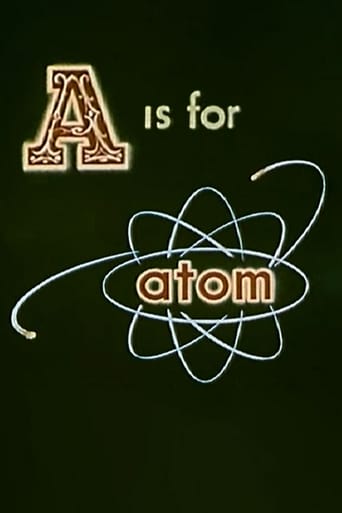

A Is for Atom (1953)
General Electric sponsors this explanation of atomic energy, detailing some of its uses besides the bomb. Using animation and an off-screen narrator, the film describes the atom, elements and isotopes, the discovery of transmutation, experiments in artificial transmutation, and the reasons for the power of nuclear fission. The film argues that now, besides war, the atomic age holds promise for energy, farming, medicine, and research. The promise of the atomic age will depend on human wisdom.
Watch Trailer
Cast
Similar titles

Reviews
Very disappointing...
Although it has its amusing moments, in eneral the plot does not convince.
The performances transcend the film's tropes, grounding it in characters that feel more complete than this subgenre often produces.
A great movie, one of the best of this year. There was a bit of confusion at one point in the plot, but nothing serious.
This cartoon short from the early 1950s showed a time when many Americans thought that there were few, if any, limits to what science could do. This piece of history was brought to you from the folks of General Electric, a company that most people of the time, associated with kitchen appliances and light bulbs and not in the business of creating nuclear and non- nuclear weapons, medical appliances, etc.This showed how useful nuclear research had been to this point and was more than just creating weapons of mass destruction. This gives a rudimentary understanding of chemistry and atomic structure before showing what could happen with nuclear fission and natural radioactive decay - and it does so in a somewhat amusing way. Radioactive elements, such as Radium are shown as hyperactive people with atoms for heads (or at least what atoms were thought to look like at the time). Radium is shown wearing a tux, dancing fairly maniacally before becoming Radon and then Lead. Uranium isotopes are shown to split and how that can be used to create electricity (and Plutonium). It's not enough to allow you to develop your own nuclear program, but it does show the benefits of nuclear research. This was definitely a time when most Americans thought science had all sorts of potential - now, many Americans seem to question some of the basic principles of science, preferring to use writings that are 2000 year old or older to answer questions about how the world works.

